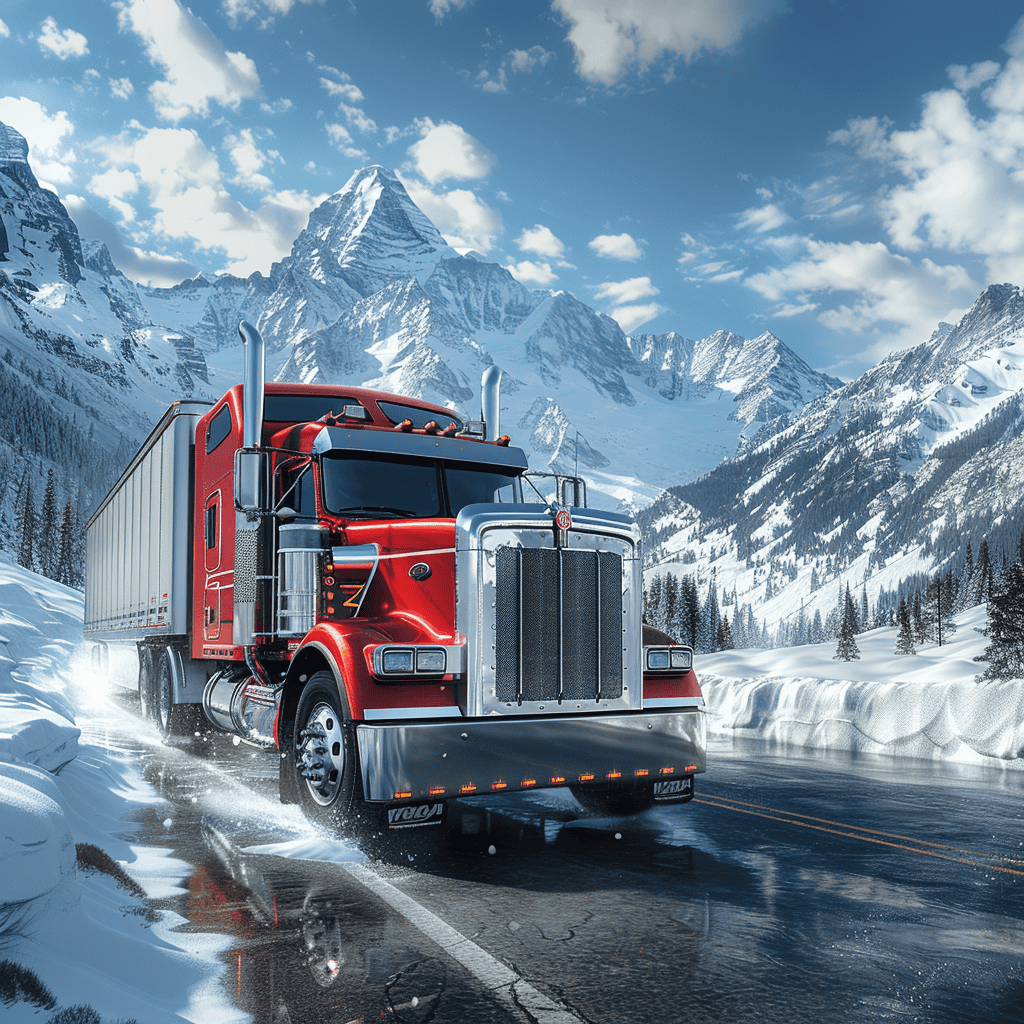Montana Oversize Permits
Freedom Heavy Haul can offer expedited Pickup and Delivery for any size shipment anywhere in the USA. Contact us today for No Hassle, No Pressure Pricing.
Montana has specific regulations for the dimensions and weight of vehicles traveling on its roads. These regulations help maintain road safety and infrastructure integrity. Understanding these limits is crucial for carriers to avoid penalties and to operate within legal requirements. In this article, you will learn about Montana Oversize Permits.
Montana Oversize Permits
Maximum Length
The maximum allowable length for a semi-trailer in Montana is 53 feet. However, if the trailer includes any rear overhang, the total length must not exceed 75 feet. These restrictions ensure that vehicles can safely navigate the state’s roads and infrastructure without causing damage or creating hazards for other drivers.
Maximum Width
Vehicles must not exceed a width of 8 feet 6 inches. This limit is set to prevent oversized loads from encroaching on adjacent lanes, which could pose risks to other road users. Maintaining this width helps ensure safe passage through narrower routes and infrastructure like bridges and tunnels.
Maximum Height
The height of vehicles, including their loads, must not surpass 14 feet. This restriction is essential to avoid collisions with overhead structures such as bridges and power lines. Adhering to this height limit is critical for safe and efficient transport operations.
Maximum Weight
The gross vehicle weight (GVW) must not exceed 80,000 pounds. This includes specific limits for axle groups: – Single axles: 20,000 pounds – Tandem axles: 34,000 pounds – Tridem axles: 42,000 pounds These weight limits help protect road surfaces and structures from excessive wear and damage caused by heavy loads.
Types of Permits Available
Montana offers various permits for oversize and overweight loads to accommodate different transport needs. These permits ensure that carriers can legally and safely move their loads across the state.

Single Trip Permits
A single trip permit is valid for one journey and is typically used for loads that exceed the standard size or weight limits. This type of permit is ideal for infrequent or one-time shipments. It allows carriers to transport their oversize or overweight loads while complying with state regulations.
Annual Permits
Annual permits allow carriers to make multiple trips over the course of a year with certain oversize or overweight loads. This permit is beneficial for companies that frequently transport large or heavy items. It provides a cost-effective solution by eliminating the need to apply for a new permit for each trip.
Custom Combine Permits
Custom combine permits are specifically for agricultural equipment such as combines. These permits accommodate the unique dimensions and weights of farming equipment, facilitating their movement during harvesting seasons. This permit type is essential for agricultural operations that require the transport of large machinery.
GVW Fee Permits
GVW fee permits are necessary for vehicles that exceed certain weight thresholds. These permits can be purchased on a monthly or annual basis, providing flexibility for carriers. They ensure that heavy vehicles contribute to the maintenance of road infrastructure by covering their fair share of wear and tear costs.
Obtaining Permits
Securing the necessary permits for oversize and overweight loads in Montana involves a straightforward process. Carriers can choose between online applications and phone orders, making it convenient to obtain the required documentation.

Online Application
Permits can be ordered online through the Montana Department of Transportation’s (MDT) ePART system. This system allows users to apply for and self-issue permits 24/7. The online application process is efficient and provides immediate access to the necessary permits. This convenience is especially beneficial for carriers with tight schedules or urgent transport needs.
Phone Orders
Alternatively, permits can be ordered by calling MDT’s Motor Carrier Services at 406-444-7262. This option is available during regular business hours, providing an alternative for those who prefer direct assistance. The phone order process is straightforward, and MDT staff can help answer any questions or provide additional information.
Required Information
When applying for permits, carriers need to provide specific details about their vehicle and load. This includes: – Vehicle make, model, and year – Serial number and license plate information – Type of trailer and number of axles – Load description, dimensions, and weight – Exact origin and destination – Complete route details Ensuring this information is accurate and up-to-date helps streamline the permit application process and prevents delays.
Special Requirements
Transporting oversize or overweight loads in Montana comes with additional requirements to enhance safety and compliance. These requirements include the use of escort vehicles and specific signage and lighting.
Escort Vehicles
Depending on the size of the load, escort vehicles may be required. These vehicles accompany the oversize load to warn other road users and provide additional safety measures. On interstate highways, an escort is needed for loads over 120 feet in length or 16 feet 6 inches in width. On two-lane highways, an escort is required for loads over 110 feet in length or 12 feet 6 inches in width. Additional escorts may be necessary for extremely large loads or specific routes.
Signage and Lighting
Oversize loads must display “Oversize Load” signs at the front and rear of the vehicle. Additionally, flashing amber lights or beacons are required to enhance visibility. These safety measures help alert other drivers to the presence of an oversized load, reducing the risk of accidents. The placement and visibility of these signs and lights are critical for safe transport operations.
Route Planning and Restrictions
Planning the route for oversize or overweight loads is a critical aspect of transport operations. Carriers must verify that their chosen route is clear of any restrictions and suitable for their load dimensions.

Route-Specific Permits
Permits issued in Montana are route-specific, meaning they are valid only for the designated route provided during the application. Carriers must check the route for any restrictions, such as low bridges, narrow roads, or construction zones. This ensures that the vehicle can safely navigate the planned path without encountering obstacles that could cause delays or damage.
Construction and Seasonal Restrictions
Montana’s roads may have seasonal weight restrictions, particularly during the spring thaw from February to May. These restrictions protect roads from damage caused by heavy loads when the ground is soft. Additionally, ongoing construction projects may affect route availability. Carriers should regularly check for updates on road conditions and plan their routes accordingly to avoid disruptions.
Additional Resources
Several resources are available to help carriers obtain the necessary permits and information for transporting oversize and overweight loads in Montana.
Montana DOT Permits Page
The Montana Department of Transportation Permits Page provides comprehensive information on the types of permits available, application processes, and relevant regulations. This resource is essential for carriers seeking detailed guidance on permit requirements.
MDT ePART System
The MDT ePART System is the online portal for applying for permits. It offers a user-friendly interface for self-issuing permits and managing transport documentation. Carriers can access the ePART System anytime, providing flexibility and convenience.
J.J. Keller Permit Service
J.J. Keller offers professional assistance with obtaining oversize and overweight permits. Their service includes route planning and permit application support, ensuring carriers comply with all regulations. This service is valuable for carriers who need expert guidance and quick permit issuance.
Federal Registration Information
Carriers must ensure their USDOT information is current. Up-to-date federal registration is crucial for the permit application process. Carriers can update their information on the FMCSA Registration website to avoid delays in obtaining permits.







